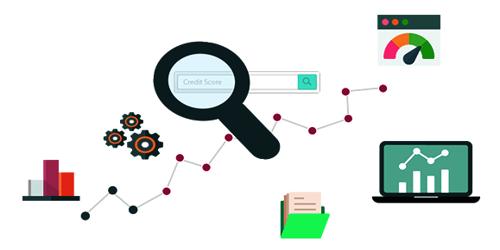Credit analysis covers the area of analyzing the character of the borrowers, capacity to use the loan amount, condition of capital, objectives of taking a loan, planning for uses, probable repayment schedule & so on.
Steps of Credit Analysis –
Credit proposals are needed to be analyzed by following some steps. Here, we will see the eight-step analysis process:
- Collecting loan information of the applicant,
- Collecting business information for which loan is sought,
- Collecting the risk related information,
- Assembling all credit information together,
- Analyzing sensitive risky credit information,
- Analyzing refined & very essential risk information,
- Making a decision on the basis of loan analysis,
- Design the appropriate loan structure according to a positive decision.
The above steps are discussed below –
(1) Collecting loan information of the applicant:
It requires a collection of information from the past and present financial statements of the business provided by the applicant. Analysis of the personal characteristics, that is, whether he is involved in any forbidden activities such as gambling, drinking habit or any other unethical affair’s is also focused on this step.
(2) Collecting business information for which loan is sought:
The bank should know the purpose of the loan, the amount of the loan and whether it is possible to implement the project by that amount. It is essential to collect the information about the sources from which repay the loan. The information of past loan of the borrower should also be collected by the loan officer.
(3) Collecting the primary risk related information:
- Assessing the overall political and economic risks.
- Identification and give explanations to the positive and negative factors in conducting the business.
- Evaluation of the positive sides of cash inflow and its possible stability in the light of the historical demand of the business.
- Consideration of the future consequences and need for investment in light of the applied loan proposal and repayment assurance of the loan.
- Evaluation of the impact on the balance sheet of the borrowers after using the loan.
- Assessing the possibility and the extent to which change is occurred in the risk level previously measured.
(4) Assembling all credit information together:
- Collection of detailed descriptions about the proposed loan
- Collection of detailed information about the loan applicant
- A detailed description of the general financial objectives and plans of the business.
(5) Analyzing sensitive risky credit information:
- Inspection of the proposed business location,
- Collection of detailed information regarding profit earnings from the existing bank-clients and other parties related to the business,
- Inspection of the internal working environment of the business,
Analysis of the Information regarding trading (selling/purchasing) and the availability of getting credit opportunity from the suppliers (Trade Credit) and the relationship with the suppliers.
(6) Analyzing refined and very essential risk information: Analysis of the honesty, integrity sincerity in individual and overall sense towards the proposed business on the part of the owners, employees, staffs and laborers of the company.
- Analysis of the possible political and economic risk.
- Evaluation of the operational possibility in consideration of the proposed loan.
- Identification of the sources and uses of future cash inflow and outflow of the proposed loan project.
- Assessment of the secondary safety of the collateral and surety.
(7) Making a decision on the basis of loan analysis:
- Determination of the explicit or implicit risk level of the proposed loan.
- If the level of risk is beyond acceptable, then loan proposal should be closed with a negative comment.
(8) Design the appropriate loan structure according to the positive decision:
- Determination of the types of loan, duration of loan and amount of interest in light of risks associated with the loan.
- Loan analysis process should be here if the terms and conditions for applied loan are not acceptable.
- Get approvals from the appropriate loan sanctioning authority.
- Sit for discussion with the borrowers about the acceptable conditions of the loan Preparation & Maintenance of necessary documents of the permitted loan.
At last, it can be said that credit analysis is very much important for a bank for its loan sanctioning activity and by following the above steps a bank does its credit analyzation.















